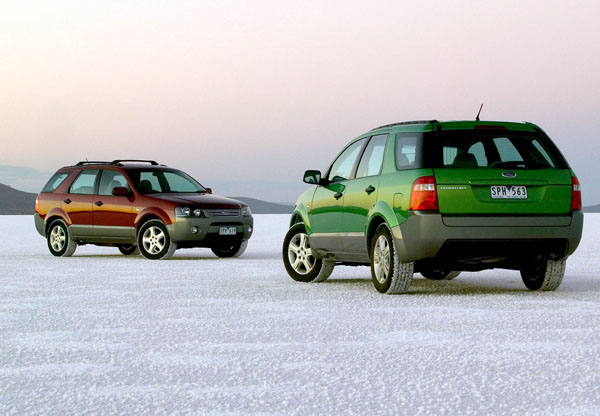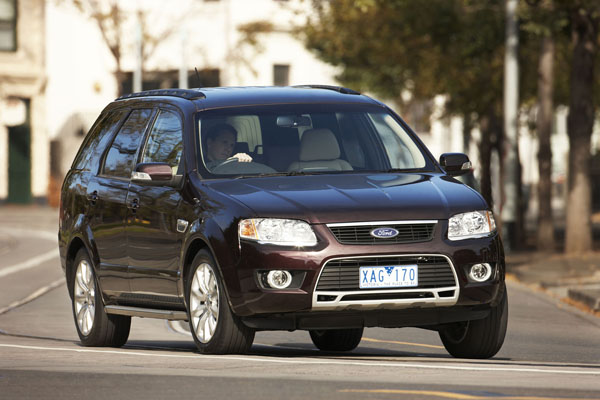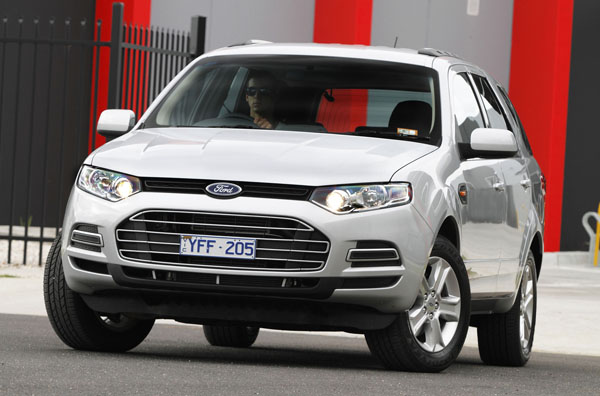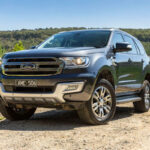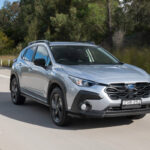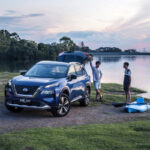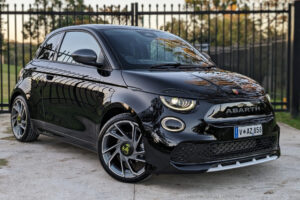By EWAN KENNEDY
CAPTION: A.
B.
C. 2011 Ford Territory
BODY COPY
Ford Territory is arguably the best vehicle ever designed by Ford Australia. Indeed some even say it may be the best automotive design in Australia bar none. Territory is based on the Ford Falcon and shares some of its mechanical components, particularly in the powertrain, but many parts are unique to the big wagon.
An SUV with the option of two or four-wheel drive Territory was launched in May 2004, with a major makeover in May 2011 and a facelift in December 2014. Big news in the ’14 model was the installation of a comprehensive infotainment system.
Territorys are holding their value well, particularly with smart buyers who know that ever other SUV sold in Australia is an overseas design that may or may not have been adapted to suit Australia driving conditions.
Seating is for five or seven people according to the number of rows of seats. The third row of seats isn’t too bad for adults, but a realistic passenger load is four adults and three children, with the kids in their favourite spot – the back seat.
Luggage space with five seats is good, but with all seven seats in use it isn’t large, but that’s not unusual in this market segment.
Territory isn’t as large as it appears, being significantly shorter than a Falcon station wagon and a little shorter than a Falcon sedan. So it’s easier to drive and park than you might expect.
This Ford SUV has precise handling for an off-road wagon and rides better than many European SUVs that cost considerably more.
Most Ford Territorys have a straight-six 4.0-litre petrol engine, with a turbocharged version of this six being offered from July 2006. The engines are on the thirsty side, but have improved over the years due to advances in engine technology. The six-speed petrol autos are noticeably more economical than the four-speeders.
The long-overdue option of a turbo-diesel engine was introduced in the facelifted territory of May 2011. A 2.7-litre V6 it has used the latest technology in variable-vane turbos and high-pressure injection. Interestingly, Jaguar and Land Rover use diesels from the same engine family as the Territory unit.
All Territorys have automatic transmissions, four-speed until October 2005, when a six-speed was introduced on the upmarket Ghia, but only in AWD format. The six-speed was gradually moved into other models, but it wasn’t until the 2011 makeover that it was finally used in all Territorys. The automatic six is the only transmission installed in the turbo-petrol and diesel powered Territorys.
Territory is sold with two-wheel-drive (to the rear wheels), or all-wheel drive (AWD). The sales split has generally been in the region of 60/40 in favour of the 2WD model, showing that most buyers of SUVs are looking for a practical wagon, not an off-road vehicle.
Electronic aids improve traction off-road in the Ford Territory 4WD variants so they can handle virtually anything the adventurous family demands. In particular, there are hill-start and hill-descent assistance features and these take much of the scariness out of extreme slopes.
Though there’s good underbonnet and under-vehicle access, this is a modern vehicle that’s complex in its mechanical components. So unless you are an expert it’s best to leave all but the simplest of maintenance to the trained mechanics.
Virtually every town of any significance has a Ford dealership, and many private garages will have a mechanic or two who was trained in a Ford workshop.
Spare parts for the Territory are generally favourably priced and we haven’t heard of any recurring complaints about availability.
Insurance premiums are usually in the lower end of the scale. Some companies may take exception to turbocharged engines so ask around before making your decision.
WHAT TO LOOK FOR
Territory is built to a reasonably high standard in Geelong. We do see the occasional problems so a professional inspection is recommended after you have done your own initial look over.
Check the engine starts up easily and idles smoothly and quietly.
Make sure the automatic transmission doesn’t hold onto gears, or change gears too often when it really should be holding the one ratio.
Possible leaks at front brake hoses were the subject of a voluntary recall in March 2009. Check with a Ford dealer or the company’s head office to see if the work has been done.
Take the wagon for a run on rough roads to see if there are any rattles or squeaks as cabin parts move. Even the 2WD models are sometimes used to explore bush tracks and the like.
Look at the condition of the body in case the Territory has been in off-road territory. Signs of the latter damage are generally at the bumper corners, the underneath of the door sills and on the underbody. Also look for tiny scratches in the body side where it has been squeezed through the undergrowth.
Visually check the condition of the interior, including the luggage area. Off-road exploring with lots of gear and muddy people on board can result a mess, even trim damage.
HOW MUCH?
Expect to spend from $3000 to $5000 for a 2004 Ford Territory 2WD TX; $5000 to $8000 for a 2006 AWD SR; $8000 to $12,000 for a 2006 AWD Ghia Turbo; $11,000 to $17,000 for a 2008 Ghia Turbo or a 2011 2WD TX; $16,000 to $23,000 for a 2011 2WD TS Limited Edition; $18,000 to $25,000 for a 2012 AWD TX; $23,000 to $32,000 for a 2014 AWD TX; and $35,000 to $46,000 for 2015 2WD Titanium.
CAR BUYING TIP
Do just as much research on insurance and finance as you do on the vehicle itself.




